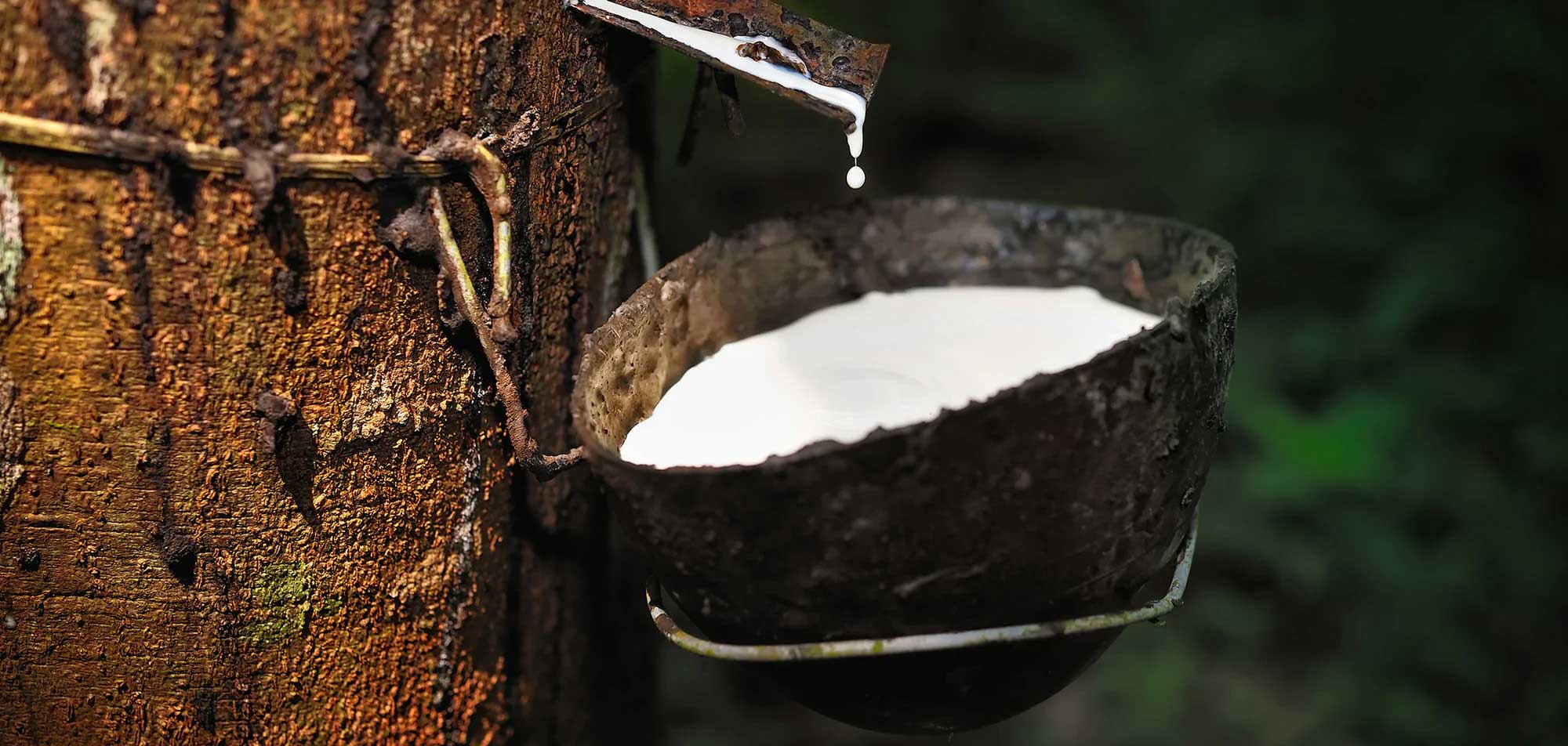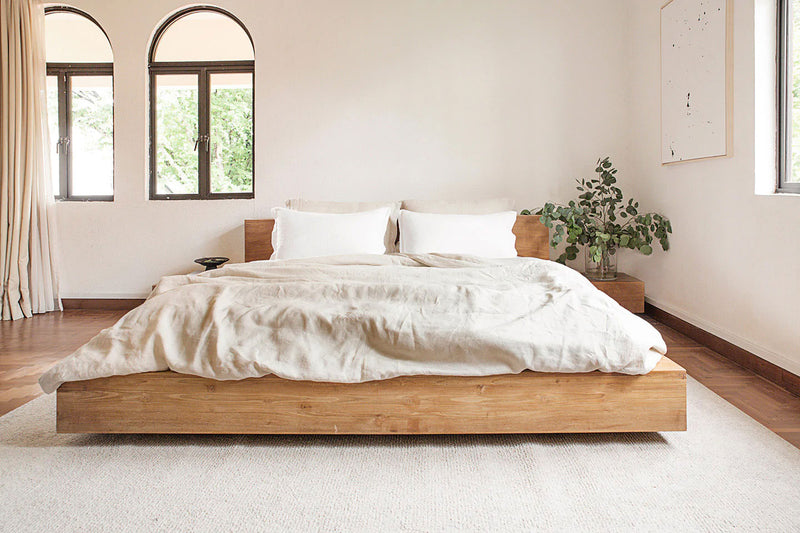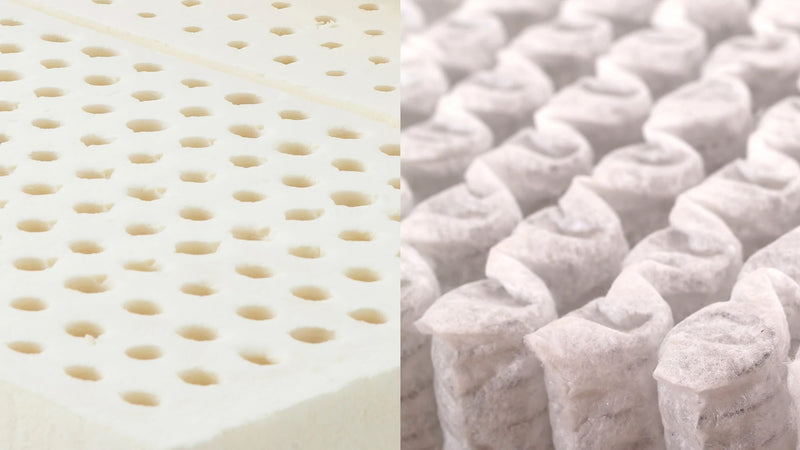Latex is an all-natural product which comes from the sap of the rubber tree, Hevea Brasiliensis. Latex looks very different before it is processed into products such as mattresses. You may be wondering how the milky-white liquid sap is made into a comfortable relaxing mattress. Let's find out.
It starts with the rubber tree
The rubber tree, Hevea Brasiliensis, grows in many tropical areas. This tree produces a sap which contains latex, and this sap can be tapped to flow out of the tree and be harvested. Most of the plantations which are responsible for the commercial production of latex are found in Southeast Asia.
Rubber plantations are managed carefully to ensure consistent growth of new trees for output. This is important, because it can take around six years for a rubber tree to grow large enough to have its sap harvested. Note that each tree can live for 100 years.
To tap a rubber tree, a collector will make a thin cut on the diagonal to remove a small piece of bark. This allows the sap (i.e. latex) to run out of the bark down the tree and this fluid is collected in a bucket. However, the flow will stop after about 6 hours, but the tree may be tapped again with a new cut the next day.

How much latex does it take to make a mattress?
An immense amount of latex is needed to make a mattress. However, remember that latex can be tapped without destroying the tree or creating pollution, unlike other types of mattresses. To make a queen size latex mattress, it will take a whole day's output of 12 acres of rubber trees.
But instead of harming the environment, this helps it: the same number of trees tapped for a queen size mattress will over the course of one year remove 143 tons of carbon dioxide from the air.
Furthermore, this same 12 acres of rubber trees will keep 8 rubber tappers employed too, creating important jobs in areas where jobs may be scarce.
In other words, when you purchase a latex mattress, you are helping the world environment. You are doing this by supporting the growth of rubber tree plantations and in doing so removing carbon dioxide from the air. You're also creating much-needed jobs for people who tap rubber trees.
How is the liquid latex made into a mattress?
It seems strange at first to think that the milky sap of the rubber tree can be turned into a mattress! Yet it can be done. This step is called processing. There are several different methods that the latex milk can be processed into a comfortable foam mattress block. In common to all of them, the liquid latex sap is first mixed with a small proportion of materials which will later help the latex solidify. There is no 'right' or 'wrong' manufacturing process; they each have different advantages and disadvantages.
Dunlop method
In the Dunlop method, the liquid latex formulation is first mixed so that it will foam. This foamy mix is placed on a conveyer or into a shaped mould, and is then passed into a special oven which solidifies the mixture and allows it to. The product is then passed on to the washing station, where residual small amounts of liquid latex and any unreacted solidifying agents are washed away. The latex foam block is then dried by hot air and is ready for use.
With the Dunlop method, the latex foam may be created in any shape that is needed; for example a king size mattress may be prepared in one mould.
Talalay method
The Talalay method is newer than the Dunlop method and produces a slightly different texture of latex. With the Talalay method, the liquid latex formulation is transferred into a shaped mould and sealed closed. Then a vacuum is applied, and the purpose of this is to disperse the latex evenly throughout the mould. After that, it is flash frozen, and immediately afterward it is flash heated so that it will permanently solidify. After cooling, the solid latex block is removed from the mould and is ready for use.
The Talalay method cannot be used to produce very large blocks of latex, so latex mattresses made with this method are created from smaller blocks glued together. Locations of the seams may vary, and this is something to take into account when purchasing a Talalay mattress.
How EB latex mattresses are made
EB latex mattresses are made using the Dunlop process.

Manufacturing of EB latex core is fully automated. Firstly, the latex formulation is mixed continuously with compressed air in order to create foam. Once the latex foam has the right density, minuscule air bubbles are mixed into it. In this way, air is infused into the compound resulting in an open cell structure. It is these open structures that gives the mattress the required air circulation and guarantee an agreeable temperature in bed. Once the latex foam is ready, a robot spread it into a mould which incorporates pin core holes to define the pattern of the mattress comfort zones. The filled moulds are then vulcanize, in other words baked. The comfort patterns of the mattress are defined by the pin core structure in the mould, bigger pins make bigger holes in the core and the mattress feels softer. The adapted firmness of the different zones ensures perfect lying comfort.
After the vulcanization step, the fresh latex core is then taken out of the mould and thoroughly washed. The remaining residue is removed completely and the core dried. Each mattress core is tested and examined individually to measure the hardness, the density and is reviewed for visual perfection. Once the mattress has been rigorously checked for its quality, it then goes to the automated warehouse where it is packed and stored. Soon after that, it is shipped under carefully controlled conditions to customers around the world.
The latex mattresses are certified by different independent organizations and carry several quality certificates. These certificates give customers and users the guarantee that every latex mattress is synonymous with exceptional comfort and safety.
Conclusion
Latex is a natural material which is produced from the sap of the rubber tree. This liquid sap is made into a comfortable solid foam block using one of the processes outlined here. When you buy a 100% natural latex mattress, you are helping the environment by supporting the growth of rubber tree plantations, which remove carbon dioxide from the air. You are also providing jobs for rubber tappers in areas where employment opportunities are often scarce.
A natural latex mattress goes above and beyond the delicious comfort you'll feel when you lie down. It's also about the satisfaction you'll feel in knowing you're purchasing an environmentally responsible product.














